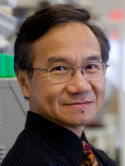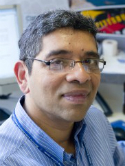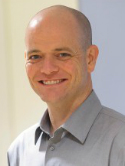Lack of survival advantage with autologous stem-cell transplantation in high-risk neuroblastoma consolidated by anti-GD2 immunotherapy and isotretinoin Journal Article
| Authors: | Kushner, B. H.; Ostrovnaya, I.; Cheung, I. Y.; Kuk, D.; Modak, S.; Kramer, K.; Roberts, S. S.; Basu, E. M.; Yataghene, K.; Cheung, N. K. V. |
| Article Title: | Lack of survival advantage with autologous stem-cell transplantation in high-risk neuroblastoma consolidated by anti-GD2 immunotherapy and isotretinoin |
| Abstract: | Since 2003, high-risk neuroblastoma (HR-NB) patients at our center received anti-GD2 antibody 3F8/GM-CSF + isotretinoin - but not myeloablative therapy with autologous stem-cell transplantation (ASCT). Post-ASCT patients referred from elsewhere also received 3F8/GM-CSF + isotretinoin. We therefore accrued a study population of two groups treated during the same period and whose consolidative therapy, aside from ASCT, was identical. We analyzed patients enrolled in 1st complete/very good partial remission (CR/VGPR). Their event-free survival (EFS) and overall survival (OS) were calculated from study entry. Large study size allowed robust statistical analyses of key prognosticators including MYCN amplification, minimal residual disease (MRD), FCGR2A polymorphisms, and killer immunoglobulin-like receptor genotypes of natural killer cells. The 170 study patients included 60 enrolled following ASCT and 110 following conventional chemotherapy. The two cohorts had similar clinical and biological features. Five-year rates for ASCT and non-ASCT patients were, respectively: EFS 65% vs. 51% (p = .128), and OS 76% vs. 75% (p = .975). In multivariate analysis, ASCT was not prognostic and only MRD-negativity after two cycles of 3F8/GM-CSF correlated with significantly improved EFS and OS. Although a trend towards better EFS is seen with ASCT, OS is near identical. Cure rates may be similar, as close surveillance detects localized relapse and effective salvage treatments are applied. ASCT may not be needed to improve outcome when anti-GD2 immunotherapy is used for consolidation after dose-intensive conventional chemotherapy. |
| Keywords: | immunotherapy; minimal residual disease; pediatric oncology; anti-gd2 antibody; autologous stem-cell transplantation |
| Journal Title: | Oncotarget |
| Volume: | 7 |
| Issue: | 4 |
| ISSN: | 1949-2553 |
| Publisher: | Impact Journals |
| Date Published: | 2016-01-26 |
| Start Page: | 4155 |
| End Page: | 4166 |
| Language: | English |
| DOI: | 10.18632/oncotarget.6393 |
| PROVIDER: | scopus |
| PUBMED: | 26623730 |
| PMCID: | PMC4826196 |
| DOI/URL: | |
| Notes: | Article -- Export Date: 3 March 2016 -- Source: Scopus |
Altmetric
Citation Impact
BMJ Impact Analytics
MSK Authors
Related MSK Work













